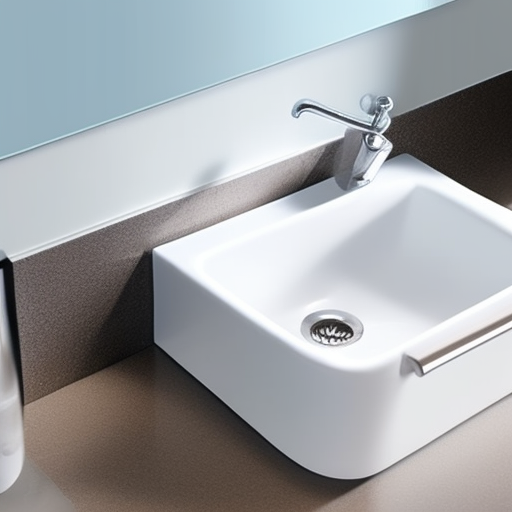When it comes to finding the perfect sink for your home, size matters! But what is the smallest sink width available, and where can you find one? Read on to learn more about the tiny but mighty narrow sink and all it has to offer.
Measuring Standard Sink Widths
Let’s talk about ! Figuring out the right size sink for your kitchen can be overwhelming, but it doesn’t have to be. First things first, determine the width of your current sink (if you have one) or the size of the cabinet where the new sink will be installed. Most standard sinks range from 22-36 inches in width.
But wait, before you run off to buy a new sink based solely on width, consider the depth and length as well. A sink that may fit perfectly in terms of width may end up being an awkward fit if it’s too shallow or long for your counter. Remember to take measurements of the entire sink, including the basin depth, front to back length, and overall height. And don’t forget to leave room for the faucet and any other accessories that will be installed with the sink. An undermount sink, for example, will require additional space around the edges for the mounting hardware. By taking all of these factors into account, you’ll be able to find the perfect sink for your kitchen that is both functional and aesthetically pleasing.
Minimum Dimensions for Sink Installation
When it comes to choosing the right sink for your kitchen, one of the most critical factors is the dimension. You want to make sure that the sink fits perfectly in the space so that you can work efficiently without any hassle. The come down to the size of the cabinet and the available countertop space.
For instance, if you have a petite kitchen with limited space to work with, a smaller sink with a width of about 15-18 inches will be perfect. You can install it in a 24-inch cabinet with enough space on the countertop to work comfortably. However, if you have a larger kitchen with ample counter space, you can go for a more substantial sink with a width of about 30 inches or more. This will allow you to have more room to work with, making it easier to clean larger pots and pans.
When choosing the sink width, it’s essential to consider your specific needs and how you plan to use the sink. Do you do a lot of dishes? Do you have a large family that uses the kitchen frequently? Keeping these things in mind will help you make the right decision when it comes to . By following these guidelines, you’ll end up with a sink that suits your needs and works seamlessly with the rest of your kitchen decor.
Custom Sink Dimensions
When it comes to choosing a sink for your bathroom or kitchen, it’s important to consider the dimensions that will work for your space. While there are standard sink widths available, sometimes a custom option is needed to make the most of your available area. can give you the flexibility you need to accommodate a particular size or shape, while still providing the functionality you require.
For example, maybe you have a tight space in a small bathroom and a standard sink just won’t work. With a custom sink, you can create the perfect fit that makes the most of your available square footage. Or, perhaps you have a unique design idea for your kitchen and need a specific size and shape to bring your vision to life. A custom sink can help you achieve the look and feel you’re after while still providing all the necessary functionality you need. So, whether you’re looking to maximize your space or showcase your style, can help you achieve your goals.
Considerations for Installing the Smallest Sink Widths
When it comes to installing a sink, homeowners are often faced with limited space in their bathrooms or kitchens. However, with the right considerations and planning, it’s still possible to install a functional sink in even the smallest of spaces. Here are some tips to keep in mind when installing the smallest sink widths:
– First and foremost, take accurate measurements of the available space. This includes the width and depth of the area and any adjacent fixtures or obstacles. Keep in mind that even a difference of a few inches can make a big impact on the final look and functionality of the sink.
– Consider the type of sink you want to install. A pedestal sink or wall-mounted sink can help free up floor space, while a corner sink can maximize a tight corner. But keep in mind that these types of sinks may come with limited storage or counter space, which may not be ideal for some users.
For those who need more storage space or counter space, an undermount or top-mounted sink may be a better option. These sinks can be installed on a countertop or cabinet and provide additional space for toiletries or kitchen accouterments. Ultimately, the right sink width and type will depend on your individual needs, space limitations, and design preferences. Don’t be afraid to get creative with your sink installation, as there are always innovative solutions available to maximize the utility of even the smallest spaces. Finally, it’s important to remember that when choosing the right sink width, it’s a good idea to consider the size of the room and the size of your family. Whether you choose a smaller sink width or a larger sink, the right sink width can make a big difference in the aesthetic and overall functionality of your kitchen, bathroom, or laundry room.